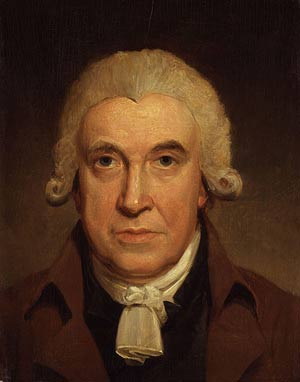 James Watt (1736 – 1819) was a Scottish inventor, mechanical engineer and chemist. He is famous for developing a separate condensing chamber for the steam engine. This invention greatly improved the efficiency of the steam engine and played a considerable role in advancing the role of steam engines in the Industrial revolution.
James Watt (1736 – 1819) was a Scottish inventor, mechanical engineer and chemist. He is famous for developing a separate condensing chamber for the steam engine. This invention greatly improved the efficiency of the steam engine and played a considerable role in advancing the role of steam engines in the Industrial revolution.
He was born in Greenock, Scotland on 18 January 1736. Initially Watt worked as a maker of mathematical instruments, but later found himself working with steam engines.
Around 1764, Watt was repairing a Newcomen steam engine to repair. He realised it was very inefficient because energy was repeatedly being used to heat the cylinder. He caused the steam to condense in a separate chamber apart from the piston. He soon had a working model and by 1775 had a patent. Though Watt was not adept at business, he was able to form a successful partnership with Matthew Boulton. Boulton & Watt became a successful company leasing the design and later producing these new steam engines for a variety of purposes from mines to cloth and wool manufacturer. Over the next six years, he made a number of other improvements to the steam engine and the business thrived as orders flooded in.
Watt also made other important discoveries and inventions. These included a copying machine and an improved production method for chlorine – a bleaching agent.
After his fortune enabled him to retire, he pursued a wide variety of interests from improving oil lamps to measuring distances by telescopes.
He died in 25 August 18191, aged 83.
The development of an efficient steam engine transformed industry and society. It helped Great Britain become the world’s first industrialised society leading to an unprecedented pace of economic growth.
Related pages:
- Inventions that changed the world
- Machines that changed the world
- The industrial revolution
- Top 10 Inventors
A measurement of power SI – the watt is named in his honour.



No comments:
Post a Comment